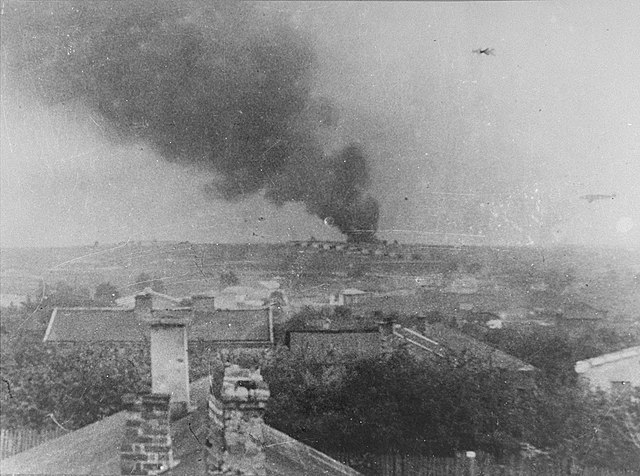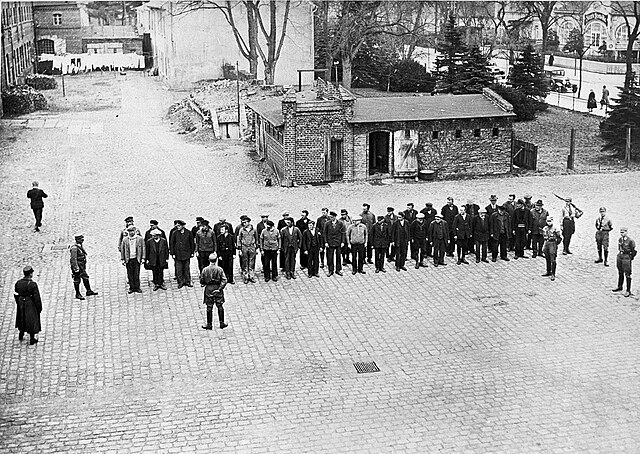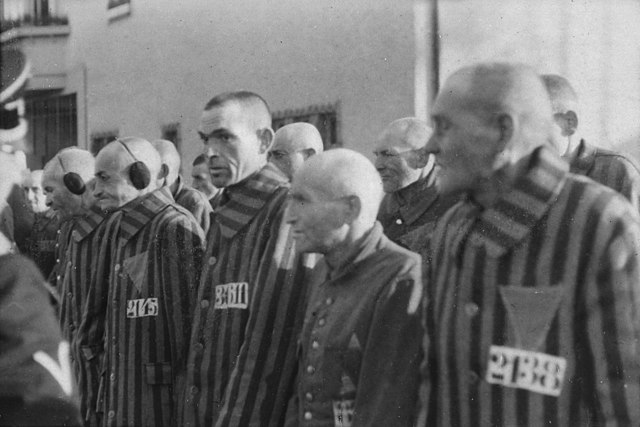Majdanek concentration camp
Majdanek was a Nazi concentration and extermination camp built and operated by the SS on the outskirts of the city of Lublin during the German occupation of Poland in World War II. It had seven gas chambers, two wooden gallows, and some 227 structures in all, placing it among the largest of Nazi concentration camps. Although initially intended for forced labor rather than extermination, it was used to murder people on an industrial scale during Operation Reinhard, the German plan to murder all Polish Jews within their own occupied homeland. In operation from 1 October 1941 to 22 July 1944, it was captured nearly intact. The rapid advance of the Soviet Red Army during Operation Bagration prevented the SS from destroying most of its infrastructure, and Deputy Camp Commandant Anton Thernes failed to remove the most incriminating evidence of war crimes.
Majdanek concentration camp
Aerial photograph of Majdanek (June 24, 1944). From bottom: the barracks under deconstruction with visible chimney stacks still standing, planks of wood piled up along the supply road, intact barracks.
Smoke rising from Majdanek, October 1943
Red Army soldiers examining the ovens of the burned-down New Crematorium, following the camp's liberation, summer 1944
From 1933 to 1945, Nazi Germany operated more than a thousand concentration camps, including subcamps on its own territory and in parts of German-occupied Europe.
Prisoners guarded by SA men line up in the yard of Oranienburg, 6 April 1933
Heinrich Himmler inspects Dachau on 8 May 1936.
Prisoners at Sachsenhausen, 19 December 1938
Forced labor at Sachsenhausen brickworks








